Kermanshah
The capital of Kermanshah Province, in an altitude of 1,630 m above sea
level, Kermanshah is 525 km to the southwest of Tehran.
Being a populous city of 631,199 inhabitants, mainly Kurds, Kermanshah
stands, like Hamadan, on the great highway that connected Baghdad and the West
with Iranian Plateau.
First built on a site a few km from the present town, it probably dates from
the 4th century AD.
Its vulnerable position has always rendered it liable to incursions, and it
was in turn captured by the Arabs in 649 AD, the Buyids in the 10th century,
soon after by the Seljuks. And then sacked by Mongols in the early 13th century.
Modern Kermanshah is an important agricultural and a burgeoning industrial
center. In the surrounding country fruit of many kinds is grown; another local
product is sugar beet. Carpet weaving and manufacture of givehs (canvas-covered
shoes like the Spanish alpargata in appearance) have long been carried on in the
town. Since the construction of an oil refinery on the banks of Qara Su River in
1935, motor spirit and other petroleum products have been processed there for
consumption in northern and northwestern Iran.
Sights to See
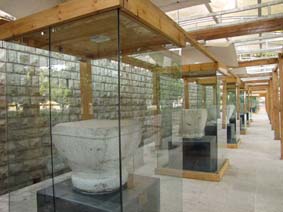
Excursions around Kermanshah
-
Taq-e Bostan
The bas-reliefs at Taq-e Bostan (Arch of the Garden), 6 km northeast of
Kermanshah, are, with one exception, the only Sassanian rock carvings
outside Fars province; they are also the latest of Sassanian carvings. The
Sassanians carved majestic sculptures out of the living rock, mostly in
their native province of Fars, designed to exalt their kings and perpetuate
their fame.
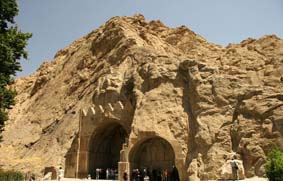
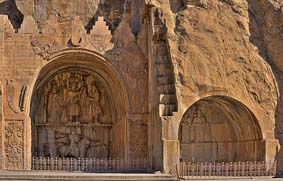
-
Bisotun
The Rock Carving and Inscriptions of Darius I at Bisotun, 32 km east of
Kermanshah, in addition to which you will see the relief of a bearded
reveler (probably Hercules) with a goblet of wine recently discovered near
the main road. On the roadside there are Achaemenian inscriptions and relief
engraved high up (100 and 40-50 m above the ground) on the Bisotun cliff,
which attract the attention of tourists, travelers, and passers-by.
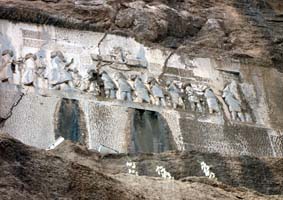
-
Temple of Anahita
This is one of the architectural monuments of ancient Iran, with its history
going back to the Parthian period (200 BC), recently unearthed at Kangavar,
90 km to the east of Kermanshah. The gathered as a result of excavations
worship of Anahita-goddess of abundance and guardian of water in ancient
Iran, and goddess of beauty and fecundity in some other countries-was
broadly practiced during the Parthian period.
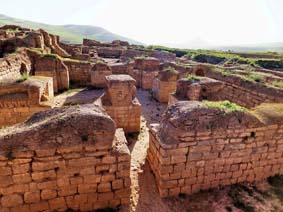
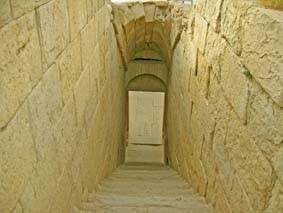
-
Taq-e Gara
In the district of Sar-e pol-e Zahab, in the heights known as the Gate of
Zagros, there is a gorge called pa Taq. Adjoining the pa Taq path, there can
be seen a simple stone structure, somewhat like a grotto, which is known as
Taq-e Gara.
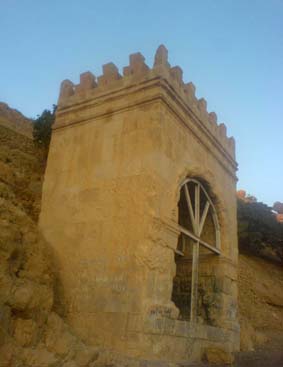
-
The Anubanini Sculptures
Two bas-relief figures of 2800 BC attributed to the Semite King Anubanini
can be seen on the mountainside at a height of 35 meters, with his left foot
on a prostrate prisoner while receiving two more prisoners from the Goddess
Nana. Under this sculptured scene, there are the figures of six more
prisoners, also carved in relief.
-
Chahar Taqi
Also called Chahar Qapu, it is a square fire-temple of stone and gypsum with
an area of 586.60 square meters, which belongs to the Sassanian period and
is considered to be the greatest of its king in that epoch.

